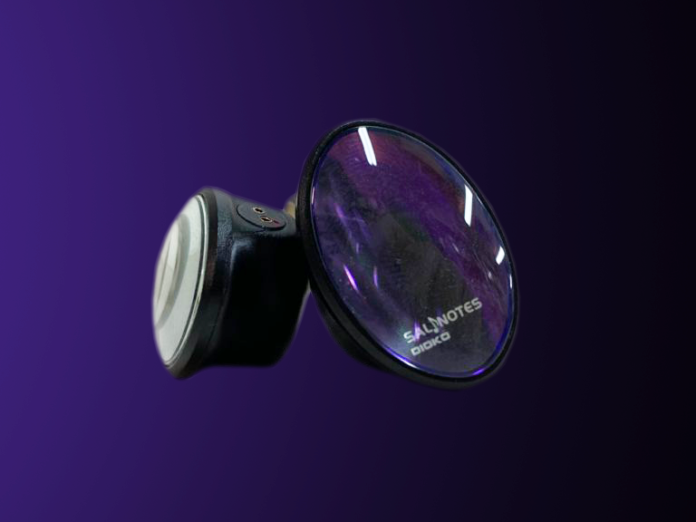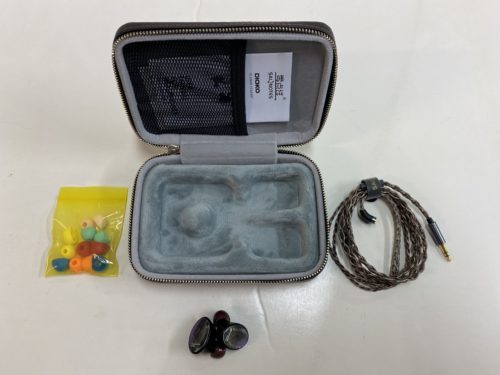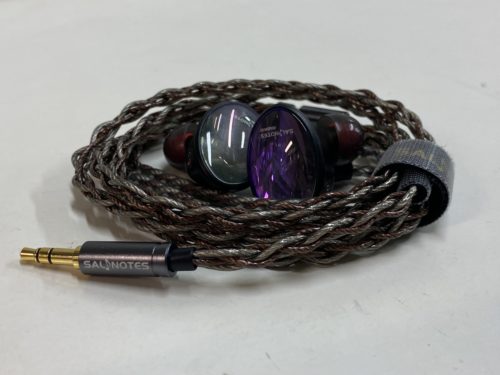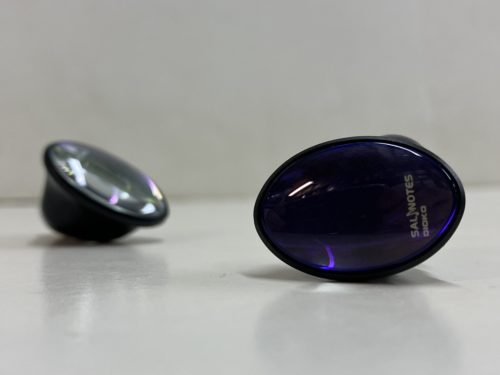When 7 Hertz released the Timeless, it helped put affordable planar IEMs on the map. Its unique style and sound signature granted the timeless a wave of popularity in the audiophile world, and now 7 Hertz is looking to follow that up with the Salnotes Dioko. This is a new planar IEM that is a collaborative effort between 7 Hertz and the well-regarded audiophile critic Crinicle. Together they helped shape the sound of the Dioko, shooting for a balanced tuning. It also only costs $99. With the price and collaboration being considered, how does the Dioko stand out in terms of quality?
What You Get
- Salnotes Dioko Earphones
- Replacement Eartips
- Earphone Cable
- Manual
- Warranty
Look and Feel
If you thought the Timeless had a wacky design, wait until you take a look at the Dioko. While the Timeless was initially smaller than I expected when it came out of the box, the Dioko was actually bigger than I had assumed in the photos. They are also much prettier, with the sapphire-coated tempered glass being one of its most glamorous aspects. Along with its aviation-grade aluminum housing, this is going to be one of the most striking IEMs you might come across for only a hundred bucks. With such a structure, the fit can be quite intimidating, but you don’t feel much of the size once you find the right place for it in your ear. Throughout my listening sessions with the Dioko, I had virtually no issues with its level of comfortability, as it provided solid support with no fatigue to be had.
Design
The planar driver used for the Dioko is a 14.8mm dual-cavity diaphragm unit. With it, the Dioko aims to provide a magnetic circuit with an efficient speed and little to no harmonic distortion. Its N55 magnet double-sided array ensures a strong performance with a high magnetic flux that channels the signal flow effectively. This also gives the Dioko a higher sensitivity, and while the impedance is still low at 16 Ohms, the 106dB and 1kHz SPL makes this IEM a bit harder to drive than most. A good DAP or DAC/Amp will grant you highly adjustable levels of gain, but regular smartphone headphone jacks might not be as capable.
Soundstage
Planar IEMs have housed some of my favorite IEM soundstages, including 7 Hertz’s own Timeless which won over so many people. When I first started listening to the Dioko, my initial impression was of its strong width, which offers an almost open spatial feel. After a while of testing the soundstage and imaging, the Dioko actually had a more identifiable shape to its stereo field than I initially thought.
While the Dioko has wide and well-separated sound properties, the limits of its open-air headspace are more strictly set. Instruments and vocals are easy to localize, but it is only able to display a slightly average level of depth for its price. If you’re looking for the Dioko to grab you with its imaging you might be a little disappointed, but for $99 it still shows some appreciable communication in its spatial abilities. Just don’t expect this to be a holographic type of output, as its style is a lot more in line with more linear IEMs.
Low End
You won’t get much of a considerable drive from these lows, but their timbre is still able to feature some excellent control and precision. Tonally, this is a much leaner bass than what you might be expecting, but the clarity is there in most genres. Although you won’t get the thickness or weight in the bass that will enrich some musical tastes, I found it to be most resolving with classical and ambient pieces, as the sub-bass specifically offers a good foundation of support to make the sound signature feel more full.
Mids
The midrange frequencies present a ton of spaciousness and air and like the bass, have a less emphasized tone. They take a nice natural shape in the sound spectrum, but instruments and vocals will appear a lot more delicate, as opposed to having a solid body. Female vocals in the upper midrange will be richer and less crowded than male vocals, but everything will still be kept clean in the timbre. The clarity in acoustic instruments has a bigger advantage than in synths, but texturally they’re treated evenly.
Highs
Here is where the sound signature starts to peek its head out a bit. The Dioko doesn’t shy away from a brighter timbre, but I never found its frequency content to be harsh or uncomfortable. Its brightness seemed natural and helped bring a layer of glisten to some sound elements, particularly in high strings and piano notes. Reverb tails are also highlighted, with more clear dissipation, and ending with a touch of sparkle to keep the highs nice and colorful.
Summary
I was so happy to have finally listened to the Dioko from 7 Hertz, and while it nowhere near let me down, the sound signature was way different than I had expected. The sound signature is very relaxed but has enough bursts of expression to be enjoyable for any type of listener, even those that might be put off by its treble presence. It works to present a completely natural, reference-style frequency response, where nothing gets in the way of the clarity that the sound elements can showcase.
If you’re looking for a more gratifying impact, the Dioko isn’t that IEM. Instead, the Dioko will help deliver an uncompromised, surface-level portrayal of a mix, which has many benefits as a tool for reference. Add in its excellent build quality, and budget-friendly price, and the Dioko can be the perfect IEM for a balanced taste.
| Pros | Cons |
|
|
The 7 Hertz x Crinacle Salnotes Dioko is available from Linsoul.
MAJORHIFI may receive commissions from retail offers.












